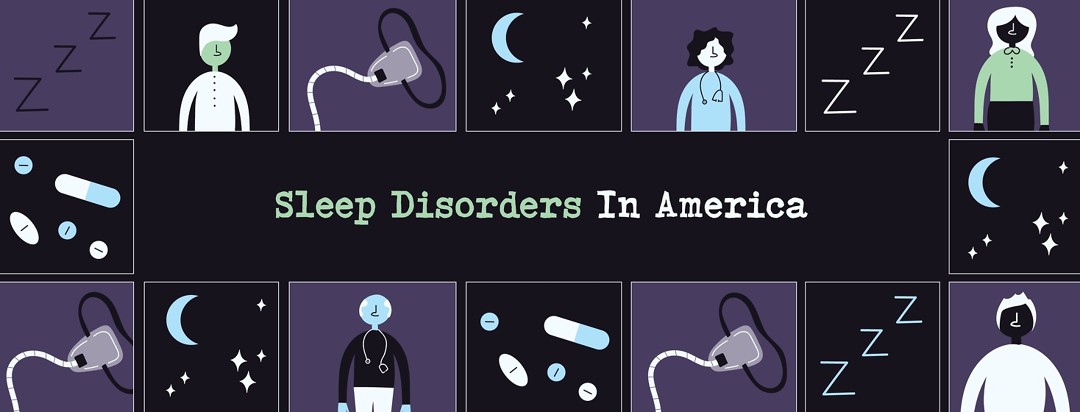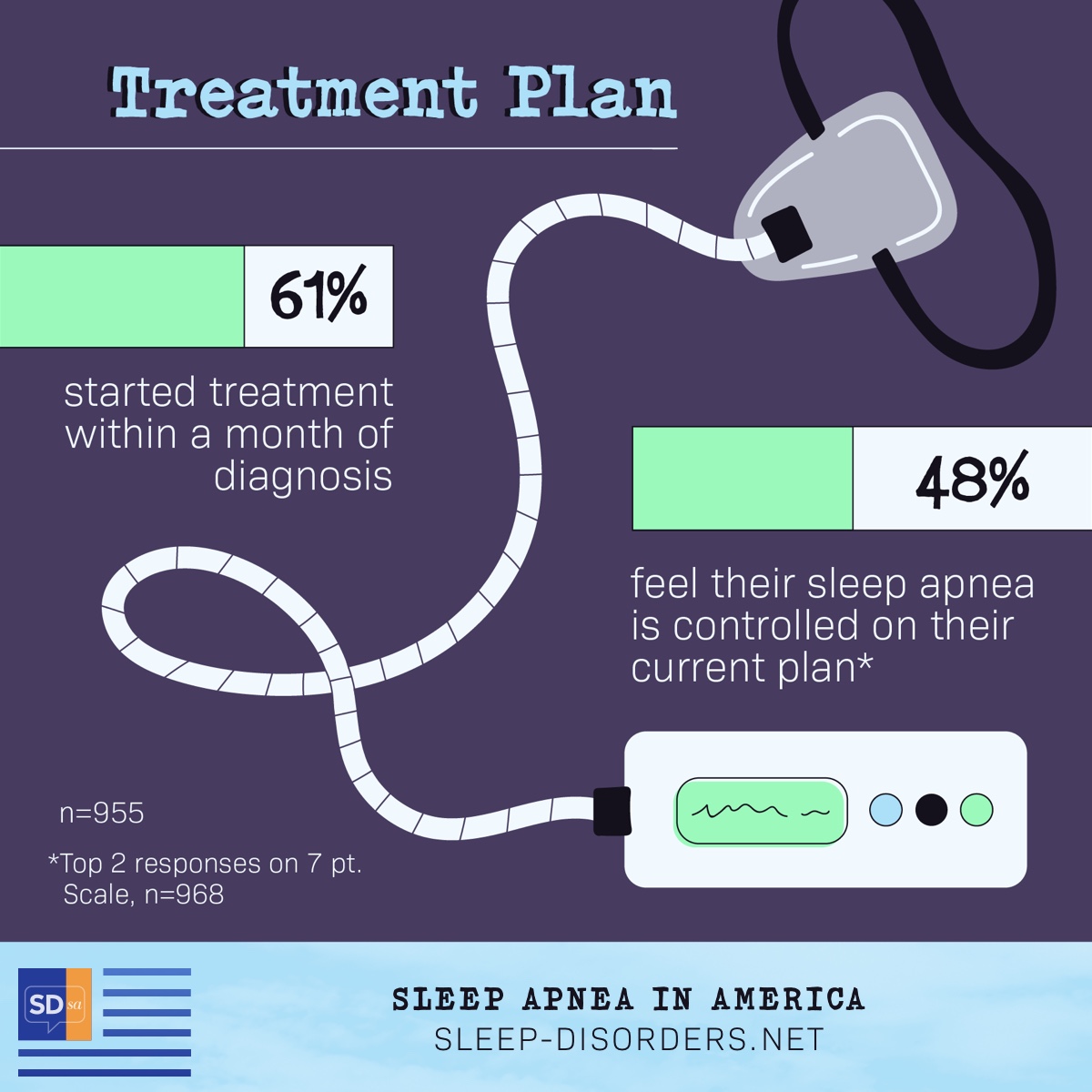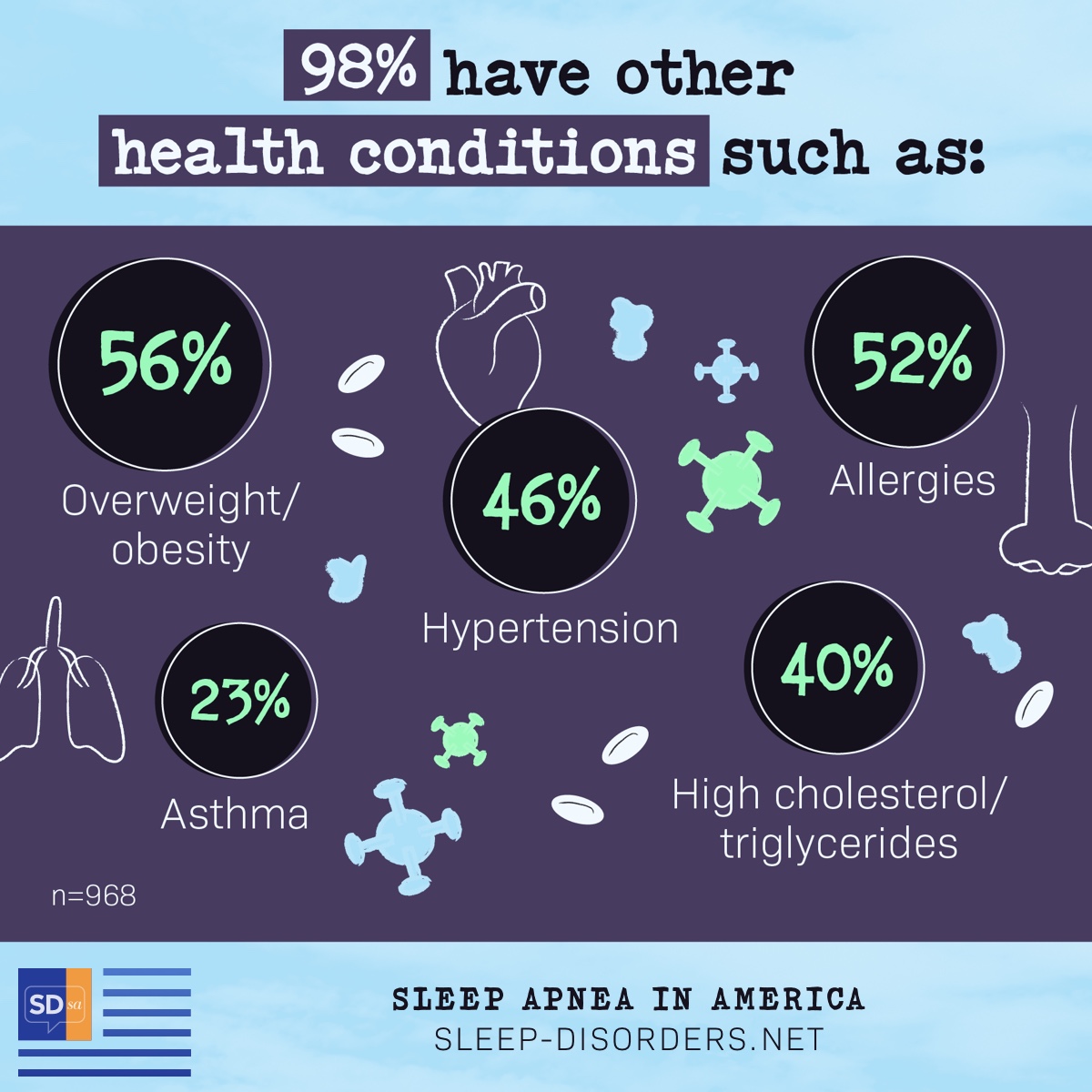The What, When, and Why of Treatment: Results From the Inaugural Sleep Disorders In America Survey
Sleep apnea is one of the most common sleep disorders in America, affecting more than 18 million people. Yet, receiving a sleep apnea diagnosis might come as a surprise. If someone sleeps alone or does not wake their bed partner with noises like snoring or gasping during sleep, they may not realize that their excessive daytime sleepiness or morning headaches stem from their stops in breathing during the night.
After getting a diagnosis, most people go on continuous positive airway pressure (CPAP) therapy. Some people have no problems adjusting to the nightly use of a CPAP machine, but for others, it is not that simple. In our Inaugural Sleep Disorders In America survey, people living with sleep apnea share what life with the condition is really like.
Sleep studies in the lab or the home
An overnight stay in a sleep lab may sound like a curious diagnostic tool, but this test gives doctors an in-depth look at what is happening in the body during sleep. A lot of information is collected, including how often someone stops breathing while asleep and for how long.
People who live far from a sleep center or are looking for a less expensive option may consider a home sleep apnea test. Talking to your doctor about symptoms could also lead to a sleep study and sleep apnea diagnosis.
Finding the right treatment option
Obstructive sleep apnea is often treated with devices, typically a CPAP machine or an oral device. About 82 percent of people surveyed currently use a device, with CPAP being the most common. For CPAP users, it can take time to find the right mask that fits comfortably, does not leak, and stays on throughout the night.
Regardless of what type of treatment someone chooses, most people opt to start treatment right away after diagnosis. Untreated sleep apnea can have serious effects on physical and mental health, and staying on a treatment plan can help keep symptoms under control.
Sleep apnea is not our only health concern
The quality of our sleep can have a positive or negative effect on our overall health and well-being. Around 46* percent of people surveyed said they worry about how sleep apnea affects other aspects of their health.
It is not uncommon for people to manage other health issues in addition to their sleep apnea. Sometimes, improving their sleep apnea improves their other condition, too. The reverse can also be true – improving another condition, like obesity, can help with sleep apnea.
The power of community
Whether you are newly diagnosed or have been living with sleep apnea for years, our community is a place you can turn to for support and understanding. Sharing our diagnosis journeys, treatment experiences, and the coping tips we have learned along the way helps us feel more connected, more informed, and a little less alone.
The Inaugural Sleep Disorder In America survey was conducted online from March through July 2020. Of the 2,198 people who completed the survey, 968 were sleep apnea respondents.
*Top 2 responses on 7-point scale




Join the conversation